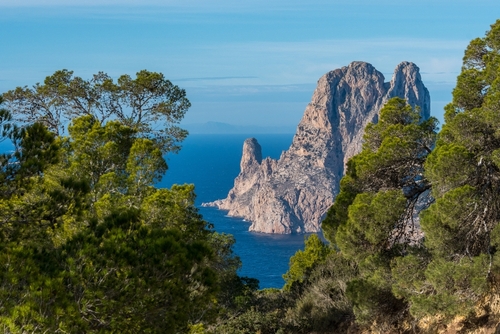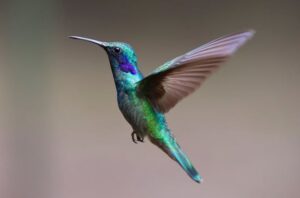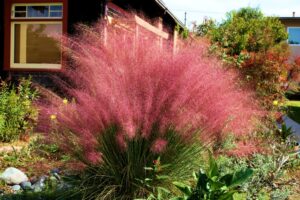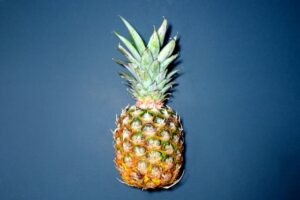A Journey Through Ibiza’s Flora and Fauna

When you picture Ibiza, you might see images of scenic beaches, world-renowned nightclubs, and sunsets draped in orange and pink. While the island is indeed famous for its vibrant party scene and laid-back atmosphere, it also offers a magnificent tapestry of wildlife and plant species—some of which are found nowhere else on Earth. Join us on an exploration of Ibiza’s hidden green heart: the rich flora and fauna of the White Isle.
1. A Snapshot of Ibiza’s Natural Landscape
Situated in the western Mediterranean Sea and forming part of the Balearic Islands, Ibiza (known locally as Eivissa) is surrounded by turquoise waters and Mediterranean breezes. Beyond its coastal charm, the island is covered with rolling hills, juniper-clad dunes, pine forests, and small, hidden valleys rich with farmland. Thanks to its mild climate and diverse habitats—ranging from salt marshes to rocky coastlines—Ibiza is home to an abundance of plant and animal life.
2. Mediterranean Plant Life: The Greens of Ibiza
Pine and Juniper Forests
- Pine forests dominate much of Ibiza’s interior, characterized by the Aleppo pine (Pinus halepensis). These aromatic forests provide a refreshing contrast to the island’s sunbaked shores.
- Along the coast, you’ll encounter twisted, gnarled juniper (sabina) trees. These hardy evergreens have adapted to the salty sea breeze and play a crucial role in stabilizing dunes.
Aromatic Herbs and Wildflowers
- The Mediterranean climate fosters lush herb gardens in the wild, featuring rosemary, thyme, and wild sage. These herbs flavor local dishes and perfume the air in springtime.
- Wildflowers such as poppies and orchids add splashes of color to the countryside. Certain native orchids are protected, reflecting their ecological importance and fragile status.
Agricultural Heritage
- Beyond forested areas, Ibiza has a deep-rooted agricultural heritage. The island’s terraced fields—planted with olive trees, almond trees, and vineyards—showcase both the cultural and natural importance of these Mediterranean staples.
- Blooming almond trees in late winter are a spectacular sight, blanketing the landscape in delicate pink-and-white blossoms.
3. Ibiza’s Wildlife: A Hidden World of Fauna
Reptiles and Amphibians
- Perhaps the most iconic Ibizan reptile is the Ibizan Wall Lizard (Podarcis pityusensis). This tiny, inquisitive lizard varies in color—from bright green to deep bronze—and can be found basking in the sun on old stone walls and rocky beaches.
- Other reptile residents include geckos and small snakes adapted to the island’s hot, dry summers. Mediterranean house geckos often cling to walls and ceilings, eagerly hunting insects at dusk.
Birdlife and Migration
- Ibiza is a vital stopover for many migratory birds traveling between Europe and Africa. Flamingos, herons, and other waterfowl can often be seen in the island’s salt flats at Ses Salines, a protected wetland area and UNESCO World Heritage Site.
- The Peregrine Falcon, the Eleonora’s Falcon, and various species of hawks and kestrels nest in the island’s rugged cliffs, demonstrating Ibiza’s importance for raptor populations in the region.
Marine Life
- The surrounding Mediterranean waters are home to an array of marine life. Snorkelers and divers can spot octopus, groupers, and the occasional sea turtle gliding near the seabed.
- Vibrant Posidonia oceanica meadows—fields of underwater seagrass—are vital to local marine ecosystems. These meadows not only provide a habitat for countless fish and invertebrates but also help maintain the island’s pristine turquoise waters and sandy beaches.
Mammals and More
- Although large mammals are not a prominent feature of the island, Ibiza does host small populations of rabbits, hedgehogs, and bats.
- Podencos, an ancient breed of Ibizan hound, are among the most famous dogs on the island. They are a popular sight in rural areas, celebrated for their agility and keen sense of smell.
4. Conservation and Sustainability Efforts
Ibiza’s unique and fragile environment faces challenges from human activity, including intensive tourism and development. As awareness grows about the importance of preserving Ibiza’s natural beauty, various organizations and local authorities have taken steps to protect biodiversity and restore damaged habitats.
- Marine Reserves: Several marine reserves around the island help safeguard fish stocks and preserve the Posidonia meadows.
- Ses Salines Natural Park: Encompassing salt flats, wetlands, and coastal ecosystems, this protected area is crucial for migratory birds, as well as for the survival of rare plant species.
- Eco-Friendly Tourism: Locally owned businesses and eco-conscious travelers are increasingly opting for sustainable tourism practices—from staying at eco-friendly accommodations to participating in beach cleanups and guided nature walks.
5. How to Experience Ibiza’s Wild Side
- Nature Trails: Explore Ibiza’s Camí Vell de Sant Rafel or Cala d’Hort area. You’ll be rewarded with fantastic views of unspoiled coastline, pine forests, and local wildlife sightings.
- Birdwatching: Head to Ses Salines or Es Codolar to see flamingos, herons, and other coastal birds in their natural habitat.
- Snorkeling & Diving: Swim among the Posidonia meadows and spot a dazzling array of fish and marine creatures. Many local dive centers offer eco-responsible tours.
- Rural Villages: Visit small villages like Santa Gertrudis or Sant Joan to get a feel for the agricultural lifestyle and surrounding farmland—a contrast to Ibiza’s more urbanized areas.
- Guided Tours: Book an excursion with an experienced local guide to learn about the island’s endemic species, conservation efforts, and hidden nature spots.
6. Final Thoughts
Ibiza may be famous for its lively music scene and upscale beach clubs, but venture beyond the tourist hotspots and you’ll discover a tranquil haven rich with biodiversity. From dense pine forests to vibrant underwater ecosystems, the island’s flora and fauna offer endless opportunities for exploration and reflection. By embracing sustainable tourism and respecting protected areas, we can ensure that Ibiza’s natural wonders remain a source of beauty and inspiration for generations to come.
Ready to explore more of Ibiza’s wild side? Trade the dance floor for a scenic hiking trail or a quiet cove teeming with marine life. Take only memories, and leave only footprints—helping protect this Mediterranean gem so that others can experience its untouched spirit too.





